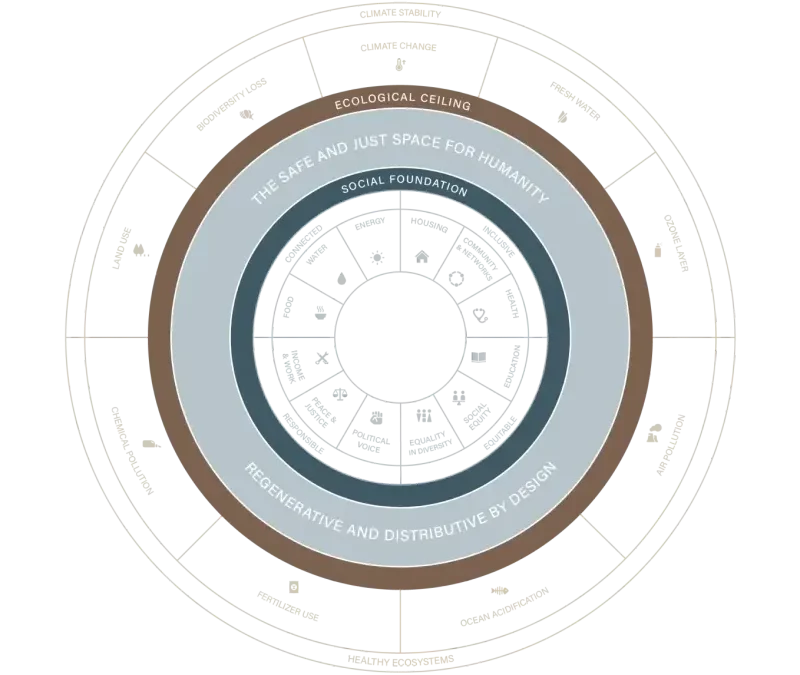In the quest for sustainable development, the construction industry stands at a pivotal crossroads. Enter Doughnut Economics, a revolutionary framework developed by economist Kate Raworth, designed to balance essential human needs with the planet’s ecological limits. This model, visually depicted as a “doughnut,” is reshaping economic thinking and offers profound implications for the construction sector.
The Doughnut Model: Core Concepts
Inner Circle (Social Foundation)
This inner ring represents the minimum standards for a good life, aligned with the United Nations Sustainable Development Goals. For the construction industry, this translates into ensuring access to safe housing, sanitation, and essential services such as healthcare, education, and equitable employment.
Outer Circle (Ecological Ceiling)
The outer ring denotes the ecological limits of our planet, including climate change, biodiversity loss, ocean acidification, and pollution. For construction, it means adopting practices that minimize environmental impact, reduce carbon footprints, and promote resource efficiency.
Applying Doughnut Economics in Construction
Change the Goal: From GDP to Sustainable Development
Move beyond GDP growth as the primary goal. Instead, focus on projects that meet the needs of communities within the planet’s ecological limits. Sustainable urban development, green buildings, and infrastructure that supports renewable energy are steps in the right direction.
See the Big Picture: Integrate Ecology and Economy
Recognize the interdependence between construction activities and environmental health. Use sustainable materials, implement green building standards, and consider the full lifecycle impact of projects.
Nurture Human Nature: Foster Collective Well-being
Design and build with community well-being in mind. This means creating inclusive spaces, ensuring safety standards, and promoting social equity through equitable access to resources and services.
Get Savvy with Systems: Embrace Complexity
The construction industry operates within a complex, adaptive system. Use systems thinking to manage projects efficiently, anticipate challenges, and innovate solutions that align with sustainable goals.
Design to Distribute: Ensure Fair Distribution
Create economic systems within your projects that reduce inequality. Pay fair wages, support local economies, and ensure affordable housing options in urban development projects.
Create to Regenerate: Promote Circular Economies
Shift towards circular economy principles. Reuse and recycle materials, reduce waste, and design buildings that are adaptable and resilient to future changes.
Question Growth: Rethink Progress
Question the pursuit of endless growth. Instead, measure success through sustainability metrics such as reduced emissions, improved quality of life, and enhanced ecological health.
Real-World Applications and Impacts
Cities like Amsterdam are pioneering Doughnut Economics to guide urban planning and development. For construction professionals, this means opportunities in sustainable urban renewal, green infrastructure, and eco-friendly housing projects.
Companies are adopting this model to create sustainable business practices. For the construction sector, this involves investing in green technologies, sustainable supply chains, and regenerative building practices.
Challenges and Considerations
Transitioning to a doughnut economy requires systemic changes in political, economic, and social frameworks. This can be challenging but is essential for long-term sustainability.
Accurately measuring social foundations and ecological ceilings is complex. The construction industry must develop and adhere to robust sustainability metrics and reporting standards.
Critics argue that deprioritizing GDP growth could hinder development, particularly in emerging markets. However, sustainable construction practices can drive economic development by creating green jobs and fostering innovation.
We’ll be exploring the Doughnut Economy in relation to construction further over the summer and focusing on a couple of case studies to see how it works in practice, look out for links and resources in future blog posts.
Author: Angela Karadog

